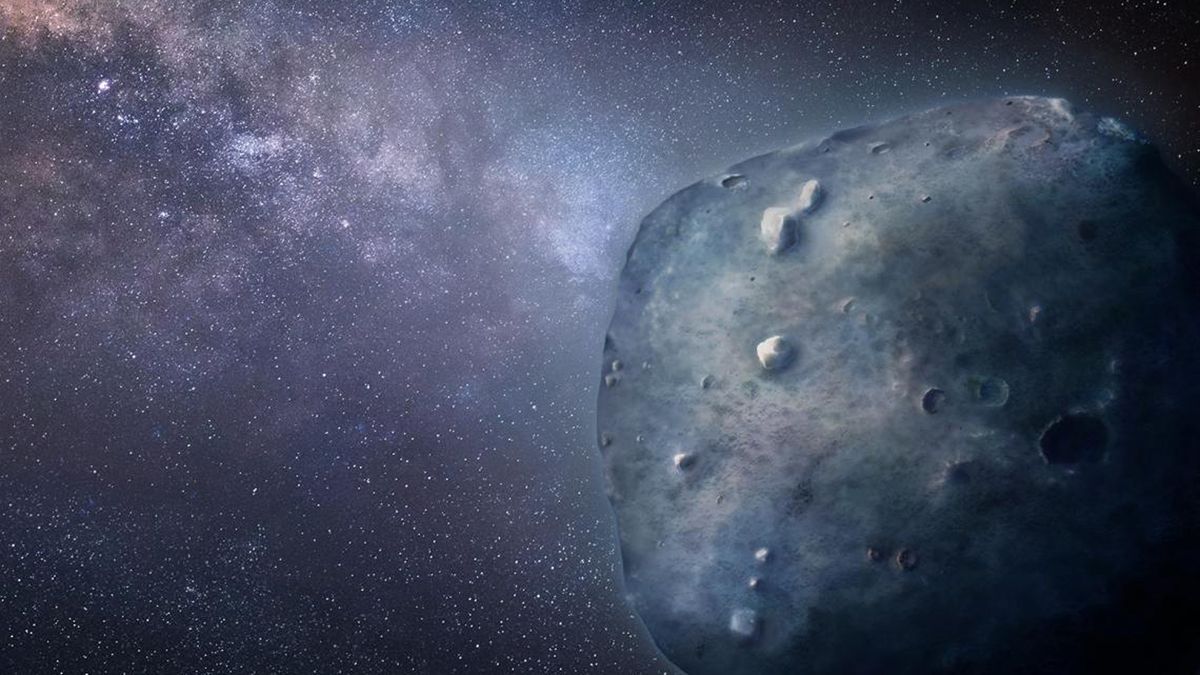How the bluest asteroid in the solar system got its color
The blue color of asteroid Phaethon has puzzled scientists since the space rock's discovery in the early 1980s.

An unusual blue-tinged asteroid likely got its trademark color from intense sunlight, new research finds, solving a decades-old mystery.
The blue color of asteroid Phaethon has puzzled scientists ever since the space rock's discovery in the early 1980s. Now, a new study suggests that Phaethon's unique orbit is responsible for the space rock's odd hue.
Phaethon travels around the sun on an elliptical orbit that takes it closer to the star than any other named asteroid. And although this close approach is only brief and Phaethon then retreats beyond the orbit of Mars, the intensity of the sunlight the asteroid is exposed to during those flybys is enough to gradually strip its surface of red chemical compounds that astronomers see in asteroids that remain farther from the sun.
Related: Sodium 'fizz' gives big asteroid Phaethon its weird comet-like appearance
During its close passes, Phaethon gets within 13 million miles (21 million kilometers) from the sun. That is three times closer to the sun than the orbit of Mercury, the solar system's innermost planet. As Phaethon zooms by the star, the asteroid's surface heats up to 1,500 degrees Fahrenheit (800 degrees Celsius). The new study suggests that this heat triggers a chain of chemical reactions that vaporize iron-rich substances and red organic compounds.
"You're essentially un-reddening the surface," Carey Lisse, a senior planetary scientist at the Johns Hopkins University Applied Physics Laboratory in Laurel, Maryland, and lead author of the study, said in a statement. "Although some red color re-accumulates as Phaethon orbits out beyond Mars, it's lost again as Phaethon approaches the sun. After thousands of revolutions, all that remains are materials that reflect darker, cooler colors."
The scientists modeled in detail the chemical composition of Phaethon's surface and calculated what happens to those chemicals as the asteroid's temperature changes along its orbit.
Get the Space.com Newsletter
Breaking space news, the latest updates on rocket launches, skywatching events and more!
"I was a little surprised the idea actually worked," Jordan Steckloff, a planetary scientist at the Planetary Science Institute in Tucson, Arizona, and co-author of the paper, said in the statement. "It just seems wild to think that maybe Phaethon looks so blue because it gets so hot that it preferentially produces iron gas versus rock gas, but apparently that isn't so crazy after all."
There are only a few dozen blue-tinged asteroids in the solar system, the researchers said, but Phaethon is the bluest of them all. Interestingly, several comets that plunge close to the sun also have a distinct blue hue.
"These types of orbits take a very long time to evolve, but that's exactly what we need: a process that requires the object to be very old and thermally evolved," Steckloff said. "The story seems to hold together."
The baking of carbon into soot at the high temperatures near the sun may also contribute to Phaethon's trademark blue, Lisse said.
Scientists will be able to learn more about this mysterious space rock in a few years, as the Japan Aerospace Exploration Agency plans to send an orbiter called DESTINY+ to study Phaethon.
The study was published online in the journal Icarus in April.
Follow Tereza Pultarova on Twitter @TerezaPultarova. Follow us on Twitter @Spacedotcom and on Facebook.
Join our Space Forums to keep talking space on the latest missions, night sky and more! And if you have a news tip, correction or comment, let us know at: community@space.com.

Tereza is a London-based science and technology journalist, aspiring fiction writer and amateur gymnast. Originally from Prague, the Czech Republic, she spent the first seven years of her career working as a reporter, script-writer and presenter for various TV programmes of the Czech Public Service Television. She later took a career break to pursue further education and added a Master's in Science from the International Space University, France, to her Bachelor's in Journalism and Master's in Cultural Anthropology from Prague's Charles University. She worked as a reporter at the Engineering and Technology magazine, freelanced for a range of publications including Live Science, Space.com, Professional Engineering, Via Satellite and Space News and served as a maternity cover science editor at the European Space Agency.